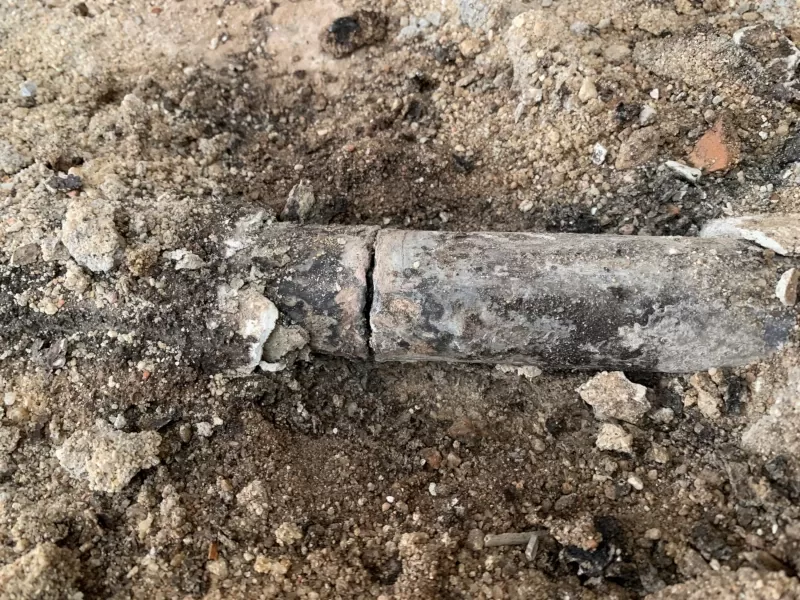In October 2024, the U.S. government announced a harder push to remove lead pipes from all water delivery systems. As noted by The New York Times:
“The new rule, issued by the Environmental Protection Agency, sets the most aggressive restrictions on lead in drinking water since federal standards were first set decades ago. Utilities will be required to take stock of their lead pipes and replace them over the next 10 years, a policy that four states — Illinois, Michigan, New Jersey and Rhode Island — have in place already.”
Water Utilities in Marin
In order to stay in compliance with federal regulations, water utilities in Marin have already conducted surveys of their delivery lines. If you are a customer of North Marin Water District, their 2023 Annual Report indicates:
“There is no lead in drinking water produced by North Marin Water District and there are no district owned lead service lines within our system …”
Marin Municipal Water District, now known as Marin Water, states on their website that their survey has been completed. An email to Marin Water received this response from Adriane Mertens, Communications & Public Affairs Manager:
“Through this inventory, Marin Water determined that there are no service laterals requiring replacement in the distribution system within Marin Water’s service area … the District’s detailed work plan for executing the inventory, can be found at annual water quality report.”
Mertens went on to suggest that if you have concerns about lead residue:
“When your water has been sitting for several hours, you can minimize the potential for lead exposure by flushing your tap for 30 seconds to 2 minutes before using water for drinking or cooking. If you are concerned about lead in your water from your home plumbing, you may wish to have your water tested. Information on lead in drinking water, testing methods, and steps you can take to minimize exposure is available from the Safe Drinking Water Hotline (1.800.426.4791) or at www.epa.gov/lead.”
Sonoma and Napa Counties’ Water Testing
Sonoma
- LabID: 838
- Lab Name: Alpha Analytical Laboratories Inc. – North Bay
- Phone #:(707) 769-3128
- Address: 737 Southpoint Blvd. Suite D
- City: Petaluma
- Zip: 94952
Napa
- Lab Name: Napa-Solano-Yolo-Marin Public Health Laboratory
- Phone #:(707) 784-4410
- Address: 2201 Courage Drive
- City: Fairfield
- Zip: 94533
- Lab Name: Caltest Analytical Laboratory
- Phone #:(707) 258-4000
- Address: 1885 North Kelly Road
- City: Napa
- Zip: 94558
So, the good news is our water is coming to us as high-quality drinking water. However, that means lead levels in drinking water are primarily from materials and components associated with private-service lines and home plumbing. Lead pipes are more common in homes built before 1986.
Are There Any Visual Indicators of Lead Pipes in Homes?
You can help identify lead pipes in your home through visual tips.
Color and Appearance
Lead pipes are typically a dull gray in color, and they scratch easily with a tool. You might also see a white oxide coating.
How Can You Differentiate Between Lead and Galvanized Pipes?
Here are a couple of things you can do to differentiate between lead and galvanized pipes:
Scratch Test
As noted above, you can gently scratch the pipe with a screwdriver or coin. If the scratched area turns shiny silver, it could be lead. However, galvanized steel also turns silver when scratched, so then a magnet test is needed to distinguish between the two.
Magnet Test
A magnet will not stick to lead pipes, as they are non-magnetic. If your magnet sticks, the pipe is probably galvanized steel.
Problems with Galvanized Pipes
Lead pipes need to be replaced, but galvanized pipes have their own problems.
According to Kai Lancaster of Classic Pipes Plumbing:
“By far, the most significant problem related to galvanized pipes is the mineral deposits that accumulate within the piping, which contaminates your home’s water over time. Also, if your galvanized pipes were ever connected to lead plumbing, the corrosion inside galvanized steel pipes could have trapped particles of lead. Even if the lead piping was removed years ago, the galvanized steel pipes could still periodically release the trapped lead into the water flow.”
Lancaster went on to say:
“Homes built as late as 1990 in California may have galvanized pipes. In California, a law prohibiting the use of lead solder and lead pipe was enacted in 1985. In 2010, laws were passed to ensure that no lead-based piping could be used in any water system intended for human consumption.”
Galvanized pipes are steel pipes coated with zinc. This means they can corrode over time. Corrosion brings its own issues. Here are several common signs of corrosion in galvanized pipes:
Rust
Zinc is only a coating meant to protect the underlying steel. As the zinc becomes compromised by age it can rust and show reddish-brown rust on the surface.
Discoloration
If the zinc coating wears off unevenly, you will see patches of discoloration on the pipe’s surface. It can go from gray to appearing dull, white or chalky.
Reduced Water Pressure
If you are experiencing reduced water pressure or water flow, it could be due to corrosion, which can constrict the water flow, leading to lower water pressure in fixtures.
Unpleasant Taste or Odor
Water quality can be affected by corrosion that can cause unusual tastes or odors.
Leaks
Any piping material susceptible to corrosion can weaken the pipe structure. This means leaks are very likely and, in an era when conserving water can be a high priority, leaks are a waste of a precious resource.
If you’re still unsure about how to identity or deal with your plumbing pipes, consider consulting with a professional plumber or contacting your local water utility for assistance.
If you have a kitchen or bathroom remodeling project in mind, it could be a great time to give your pipes a closer look. Please give AplosGroup a call if you would like a free consultation.


